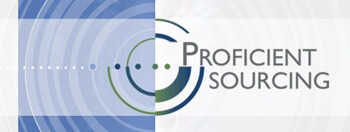
The past year has witnessed all manner of economic disruptions due to supply chain problems. We have seen how these problems have interrupted and delayed manufacturing supply systems, and possibly given reshoring efforts an unexpected boost.
Manufacturing over the past 50 years or so has required ever more sophisticated and complex use of new minerals to produce defense systems, computers and other electronic devices, exotic superalloys are now needed for many specialized purposes. Among others, the great expansion of renewable energy is creating new supply issues because of the specialized materials required. We wonder if our leaders are working these supply issues in a timely manner.
Not only is the supply of critical ingredients more complicated than in the past, but the variety of countries containing critical materials makes foreign affairs more complex as well. We have seen the problems with isolating Russia in response to their invasion of Ukraine, as Russia supplies several critical items not easily replaced elsewhere.
Moving forward, then, we should expect more complicated relationships with countries that supply these critical materials. Defense and electronic devices are increasingly reliant upon rare earths. These materials are not actually rare but exist in very dilute concentrations within compounds. This means expensive mining and processing.
We have reported about rare earths on several previous occasions. The US was the original force in discovering uses and supplying rare earths, which are critical for several key products at present. Some years ago, the Mountain Pass mine in CA was THE primary source for these materials, but environmental issues and costs closed that mine for some years and over time China took over the lead in global supply. Consequently, our relationship with China is affected in a major way.
Another area where these considerations will become more prominent is green energy. Wind turbines, nuclear waste, and solar power all involve issues that make the radical expansion of non-fossil fuel generation problematic. One such factor is the batteries required for electric vehicles and solar/wind power. Lithium-ion batteries are the current favorite, so what is the supply situation with lithium?
An AP report from 5/3/22 noted a $3.1B plan funding the making and recycling of lithium-ion batteries. To reach green energy goals, electric cars will need to expand by orders of magnitude. That plus a similar growth in wind turbines and solar panels means these batteries’ supply will need a huge supply boost quickly. Is lithium available in needed quantities or is a major increase going to be a problem?
We Googled lithium and found several articles bearing on this. Once again, the situation is lithium is found in very dilute concentrations, so it presents the same issues as rare earths. It seems green energy has large advantages if implemented, but major environmental hurdles must be overcome first.
For example, there is a plan to create a large lithium mine in NW Nevada, Thacker Pass. The appropriate Wikipedia article is here.
Thacker Pass is featured in a 2/9/21 article in StreetsBlog USA “Lithium Mining: The Hidden Environmental Cost of EVs.” This article dealt with the serious environmental factors associated with the planned Thacker Pass lithium mining operation, and these are duplicated with many other critical minerals:
“Because lithium’s concentration in ore at Thacker Pass runs as low as two-tenths of one percent, producing one ton of the stuff for use by society entails strip mining and processing as much as 500 tons of earth. Over a single year, producing 60,000 tons of lithium at the site could mean digging up as much as 20 to 30 million tons of earth, more than the annual amount of earth dug up to produce all coal output of all but seven or eight U.S. states.
“Removing the lithium from the ore is done with the industrial economy’s dissolver of choice, the notoriously corrosive and toxic sulfuric acid. The developer, Canada-based, China-backed Lithium Americas Corp., plans to acidify molten sulfur on site, trucking in the stuff from oil refineries. Hauling the material will require 75 tractor-trailer loads a day, according to Falk and Wilbert — every one of them running on fossil fuels.
“Unsurprisingly, the processing equipment is budgeted at a dozen times more than the mine itself, in Lithium Americas’ “pre-feasibility study” (pdf, p. 228 of 266), with the whole enterprise topping out at more than a billion dollars. You don’t spend that much money on apparatus to move, crush, leach and acidify earth without scarring and contaminating large swaths of it”.
This sounds an awful lot like the rare earth situation. The materials are critical for accomplishing needed manufacturing, yet the desired material is not found in a form easily used. Currently Chile, Australia, Argentina, and China are the primary sources of lithium. Evidently there are significant reserves of the minerals that yield lithium, but a gigantic increase in mining and processing sounds like an expensive and time-consuming thing. And just imagine the environmentalists’ pushback!
Lithium and many of the other critical minerals, have a giant impact on our ability to conduct foreign affairs as well as plan for long term supply partners. Consideration of the political situation in supplier companies will be more significant in planning future manufacturing.
Maybe we should all be wary of the renewables happy talk. It’s not so easy. More from the AP article:
“A March 31 executive order intended to increase mining of lithium and other critical minerals does not waive or suspend existing environmental and labor standards, the White House said. Nor does it address the chief hurdle to increased domestic mining: the years long process needed to obtain a federal permit for a new mine.”
This sounds to us like a right hand handicapping the left and reminds us of the situation with nuclear power. It takes about 10+ years to get a nuke plant up and running unless you surround it with an aircraft carrier. Then the time is reduced to 3 years.
Make sense? Anyone concerned about the lithium supply? And that’s just one of a whole bunch of critical minerals. If you are involved with anything involving these materials beware!

